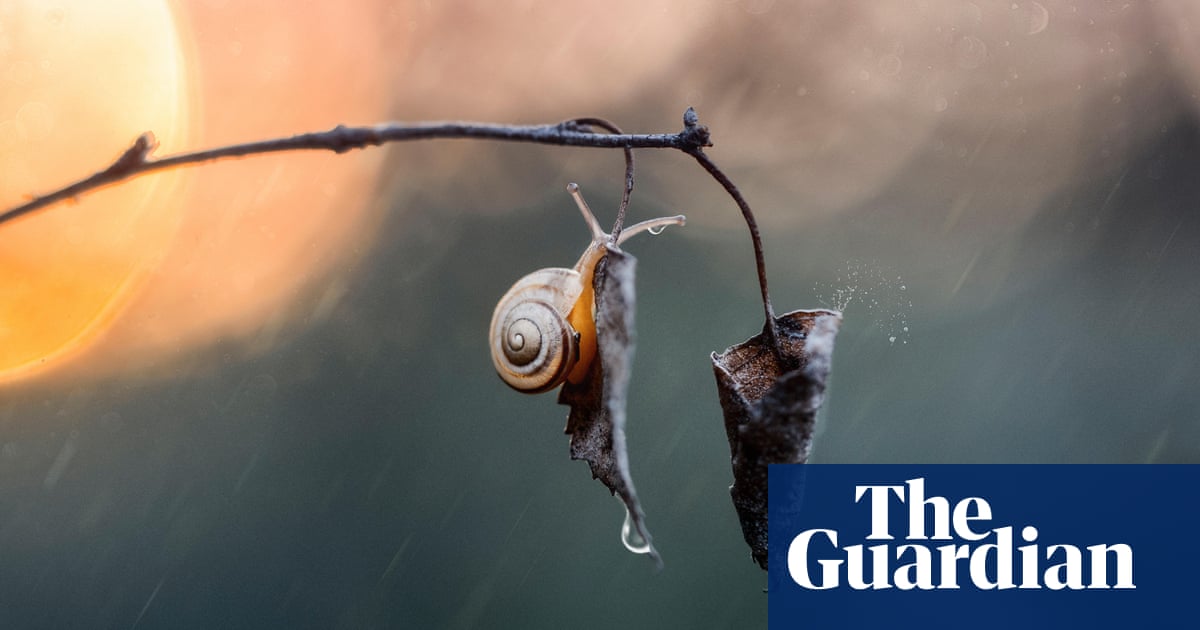If you love a feisty rebel, look no further than the flamboyant cuttlefish, on the 10-strong shortlist for the Guardian’s invertebrate of the year 2025. It is small, smart, capable of spectacular displays and has fought against the odds to become the deadliest of its kind.
This creative creature is small for its class of cephalopods, which includes octopus, squid and nautilus, at just 6-8cm. Due to the relatively reduced size of its air-filled cuttlebone, a unique internal shell used for buoyancy that lends these molluscs their unique, rather alien-spaceship way of swimming, it cannot float or hover as well as its cousins.
So, rather than swim, the flamboyant cuttlefish generally ambles along the seafloor on two tentacled arms and fins that, together, give the impression of legs.
When faced with predators, most species of these chameleons of the sea dart away to escape, or use their remarkable colour and texture-changing talents to blend into their surroundings.
Not so the flamboyant cuttlefish – or Ascarosepion pfefferi, to give the animal its scientific name. Instead, this species, which is dark brown with some yellow and purple spots, stands its ground and shows off it fabulous talents: it flashes a dazzling array of patterns and psychedelic colours. Yellows, reds, whites and browns ripple along the body, as the cuttlefish pulses its fins and wave its arms in a hypnotic display. It is believed to warn predators that it is venomous, the only cuttlefish species known to be toxic.
Cuttlefish are smart, too. Scientific studies have shown them to be among the most intelligent invertebrates, with one of the largest brain to body ratios of all.
The former Top Gear presenter Richard Hammond once carried out an experiment for a Miracles of Nature BBC programme to find out how adaptive cuttlefish really were. He introduced a cuttlefish to the equivalent of a “living room” aquarium, with a chintzy chaise-long, striped “wallpaper”, a zebra rug and even a chequerboard floor.
The animal had a good stab at mimicking the chequerboard, with a single white square, flashed a quick zebra-print, before settling on the brown-patterned chintz, the nearest thing to a seafloor in the tank.
Had it been the flamboyant species, however, the results may have been even more spectacular. So sophisticated is the pfefferi, the RuPaul of cuttlefish, some have been seen to change colour along one half of their bodies, while maintaining a normal colouration on the other.
It also uses its talents during courtship. Males, 10-60% the size of females, court their mates with vivid and dynamic displays, which appear to be among the most elaborate rituals among cephalopods. How these rituals pay off is unknown, but females are exceptionally choosy, rejecting 50% of potential mates.
The cuttlefish live in coral reefs, from Indonesia to eastern Papua New Guinea and across northern Australia and the east Indian Ocean, but are threatened by pollution, overfishing and habitat destruction.
Feisty, flamboyant, fussy and clever: vote for this cute cuttlefish, you will not regret it.
-
Between 24 March and 2 April, we will be profiling a shortlist of 10 of the invertebrates chosen by readers and selected by our wildlife writers from more than 2,500 nominations. The voting for our 2025 invertebrate of the year will run from midday on Wednesday 2 April until midday on Friday 4 April, with the winner to be announced on Monday 7. Read the other wonderful nominations here.

 2 months ago
45
2 months ago
45

















































